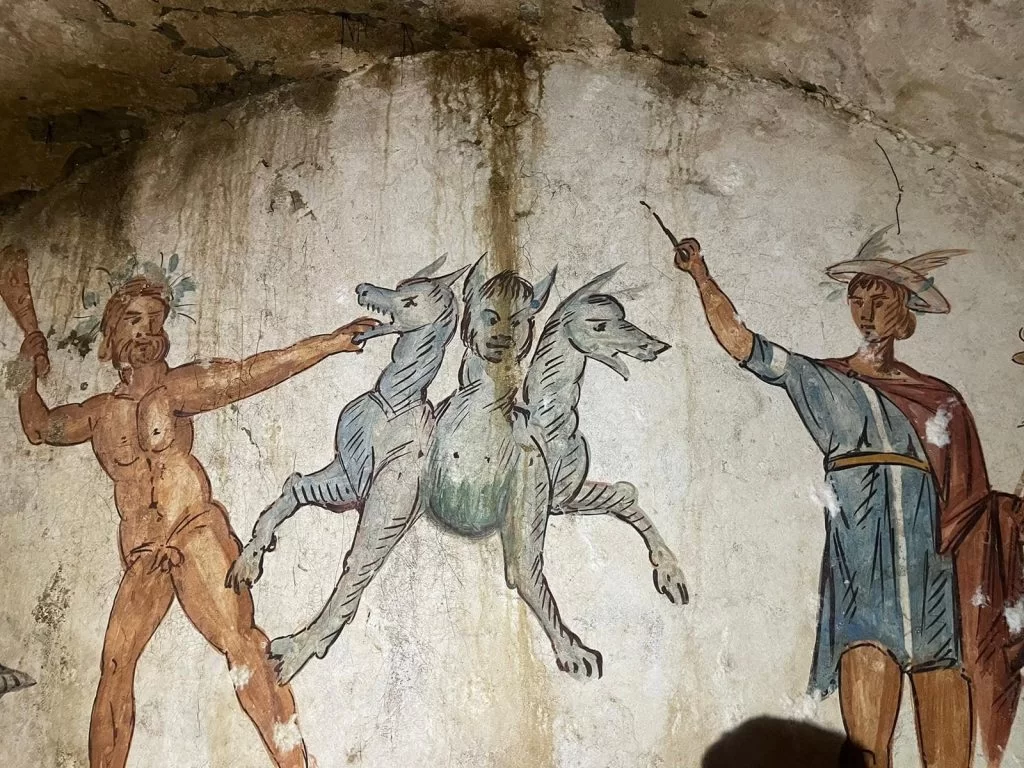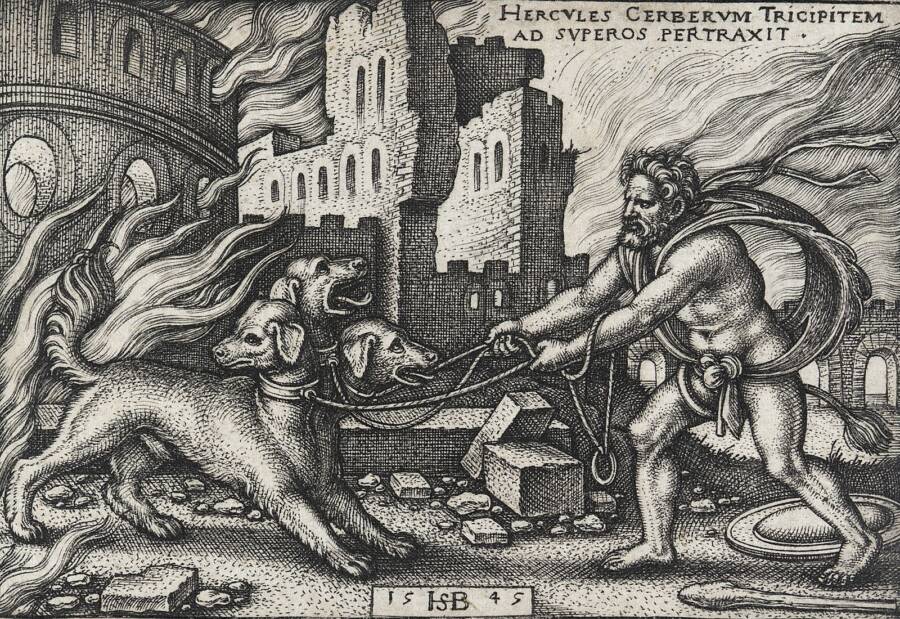The sealed and untouched tomb was named for its mural of Hercules fighting Cerberus, the three-headed dog guarding the gates of the underworld.

Superintendent of Archaeology, Fine Arts, and LandscapeThe tomb was designated the “Tomb of Cerberus” after the incredible mural of Hercules fighting the three-headed dog that guarded the underworld.
Archaeologists have discovered an incredibly well-preserved tomb in Italy featuring a collection of stunning frescoes spanning Roman mythology.
The sealed tomb was discovered in Giugliano, a suburb of Naples, and dates back approximately 2,000 years. Archaeologists previously found several other burial sites from the same period, between 510 B.C.E and 476 C.E., in the area.
The tomb was found on farmland during a routine archaeological survey before the city began maintenance on its water system, according to the Daily Mail. Archaeologists then noticed a wall that had been built using opus incertum, an ancient Roman construction technique that translates to “irregular work” and features differently shaped and randomly placed stones.
Archaeologists carefully removed the ceiling tiles to get into the tomb, where they found an “unprecedented” and “indescribable” discovery.
“The tomb has frescoed ceilings and walls in perfect condition, with mythological scenes that go all around the room,” said Mariano Nuzzo, the superintendent of Archaeology, Fine Arts and Landscape for the Naples metropolitan area.

Superintendent of Archaeology, Fine Arts, and LandscapeThe tomb features several pristine frescoes of scenes from Greek mythology.
The tomb featured several frescoes, murals painted on freshly lain, wet plaster. Some of history’s most famous paintings and murals are frescoes, including the Sistine Chapel and The Last Supper.
The tomb’s frescoes depict various scenes of mythological creatures, with the most notable among them showing Hercules fighting off Cerberus, the three-headed dog that guarded the gates of the underworld. The tomb was designated the “Tomb of Cerberus” after this fresco.
Another mythological recreation featured two ichthyocentaurs, centaur-like sea gods with the upper body of a human, the lower body of a horse, and the tail of a fish.
The tomb continues to be carefully excavated by archaeologists.
“Three painted klìnai, an altar with vessels for libations, the deceased still placed on the funeral beds with rich objects – complete the picture of a discovery which, in this area, is unprecedented,” Nuzzo said. “The emotion aroused by the privilege of such a discovery is indescribable.
“The territory of Giugliano, after years of oblivion, is finally returning significant vestiges of its glorious past, to be preserved and protected, thanks to a common effort.”
The three-headed dog Cerberus was the last and most dangerous of the Labors of Hercules. Greek mythology states that Hercules, the son of Zeus with a mortal, was forced into madness by Hera, Zeus’ jealous wife, causing Hercules to kill his wife and children.

Hans Sebald BehamHercules defeated Cerberus with his bare hands and captured him.
When Hercules came out of this state of madness, he was eventually tasked with completing 12 dangerous labors as part of his penance. Each task was seemingly impossible, from killing an invulnerable lion to holding the entire weight of the world on his shoulders, according to the Perseus Project at Tufts University.
Hercules’ 12th task was to go to the underworld and capture Cerberus, the three-headed dog that guarded the gates. No mortal had ever gone to the underworld and returned.
Hercules made his way into the underworld and and found Hades, who told him that he could take Cerberus if he beat the beast without weapons, just his own strength. Against all odds, Hercules wrestled Cerberus into submission and brought him to Eurystheus, making him one of the great heroes of Greek mythology.
After reading about the discovery of the Tomb of Cerberus, read about the incredible artwork found inside a 4,300-year-old Egyptian tomb. Or, read about the ancient statue of Hercules found in a Roman sewer.





